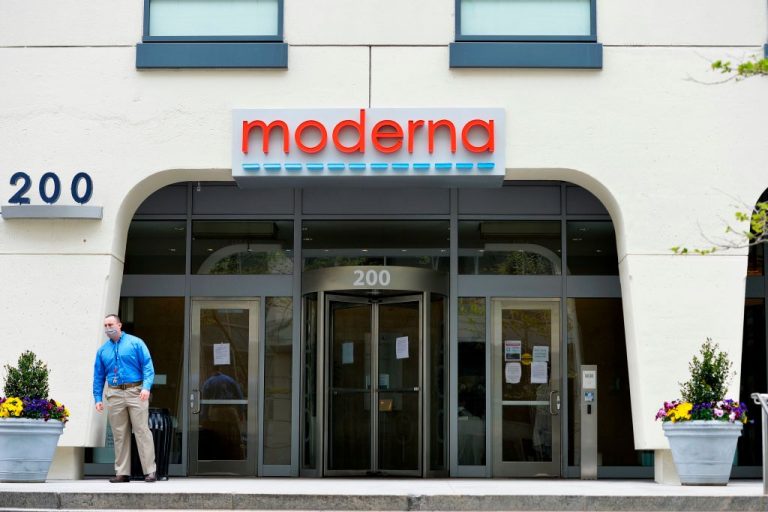U.S.-based Moderna, Inc. announced on Sept. 9 the company is currently developing 37 programs, 22 of which are currently in ongoing clinical trials, for new Messenger RNA-based vaccines and therapies.
The announcement came in a company press release targeting investors on its fifth annual R&D Day, that highlighted several “significant advances across its portfolio of mRNA pipeline programs,” which includes a combination booster injection for COVID-19 and seasonal influenza vaccine, among 22 others currently in clinical trials.
Some of the products Moderna announced include a Phase 1 study for a standalone quadrivalent seasonal flu vaccine candidate, a Phase 2 study for a “personalized cancer vaccine” for melanoma patients, and a new development candidate for a combination of the company’s Respiratory Syncytial Virus and Human Metapneumovirus mRNA vaccine instructions.
The company, which also announced it is sitting on $15 billion in cash reserves, saw a 7.8 percent increase in its stock value on the announcement, closing at $455.92. Moderna stock opened 2021 at $107.23.
The presser lauded Phase 2 and 3 trial results for its current mRNA injection against SARS-CoV-2, the virus which causes Coronavirus Disease 2019 (COVID-19), codenamed mRNA-1273, including its usage as a third dose booster injection.
Success
You are now signed up for our newsletter
Success
Check your email to complete sign up
Notably, Moderna also promoted it has achieved full enrollment for a Phase 1 study for its “next-generation vaccine against COVID-19,” codenamed mRNA-1283, described as “a next-generation vaccine candidate against COVID-19 that encodes for the portions of the SARS-CoV-2 spike protein critical for neutralization, specifically the Receptor Binding Domain (RBD) and N-terminal Domain (NTD). It is being developed as a potential refrigerator stable mRNA vaccine that will facilitate easier distribution and administration by healthcare providers.”
According to a March 15 press release on the company’s website, Phase 1 trials for mRNA-1283 have been underway since March, administering doses to live humans.
The current batch of COVID injections must be stored between -25 to -15 degrees celsius.
A December of 2020 article by Health.com explains the vaccines’ need for ultra-cold temperatures, “Vaccine-makers also coat the mRNA in lipid nanoparticles. These tiny bubbles of fat help carry the mRNA to our cells and offer a degree of protection against enzymes that could destroy the fragile genetic material.”
“The specific lipid nanoparticle formulas, which are kept secret by the drugmakers, determine just how cold the vaccines must be kept, hence the different storage requirements,” says the article.
The release also says offshoot Moderna Genomics will “leverage Moderna’s current mRNA and lipid nanoparticle (LNP) platform but will also pursue novel technology within nucleic acids,” adding Genomics aims to be a “leader in large, complex genomic editing.”
Moderna already describes its gene-therapy based medical solutions technology as an “Operating System” for the human body, “Recognizing the broad potential of mRNA science, we set out to create an mRNA technology platform that functions very much like an operating system on a computer.”
“It is designed so that it can plug and play interchangeably with different programs. In our case, the ‘program’ or ‘app’ is our mRNA drug – the unique mRNA sequence that codes for a protein.”
“Generally, the only thing that changes from one potential mRNA medicine to another is the coding region – the actual genetic code that instructs ribosomes to make protein.”
“Utilizing these instruction sets gives our investigational mRNA medicines a software-like quality. We also have the ability to combine different mRNA sequences encoding for different proteins in a single mRNA investigational medicine.”
Moderna calls its mRNA technology the “Software of Life” on its webpage.
According to the COVID-19 vaccine timeline posted on the company’s website, Moderna first began development of today’s injections on Jan. 11, 2020 after “Chinese authorities shared the genetic sequence of the novel coronavirus.”
Five weeks later on Feb. 24, Moderna says it shipped the CDC the first batch of mRNA-1273, which is used in today’s vaccines. On March 16, the first human was injected. Moderna praises itself for a speedy 63-day development time for their product.
U.S. researcher at the University of North Carolina, Ralph Baric, a man who has co-authored papers with Shi “Batwoman” Zhengli from the Wuhan Institute of Virology, told Italian broadcaster Rai in a November of 2020 interview that when his team collaborated with the WIV, they were simply given a viral sequence from the Chinese Communist Party’s database.
Baric, who Rai described as, “The greatest coronavirus expert in the world,” admitted specifically in reference to bat coronavirus research, “We had no access to the viruses in China. All we had was access to the sequence.”
“And so you can chemically synthesize the sequence of the virus in the laboratory and make the virus sequence and then recover the virus.”
“If you think that people can engineer a virus genome and that it’d be infectious and leave no trace, they have to start from a template from somewhere. You have to have a sequence to begin with. You can’t just put a sequence together to make a virus,” said Baric.
Earlier in the month, Moderna competitor Oxford-AstraZeneca made headlines that it, too, is using its gene-therapy vaccine platform technology to attempt to make a vaccine targeting cancer.















